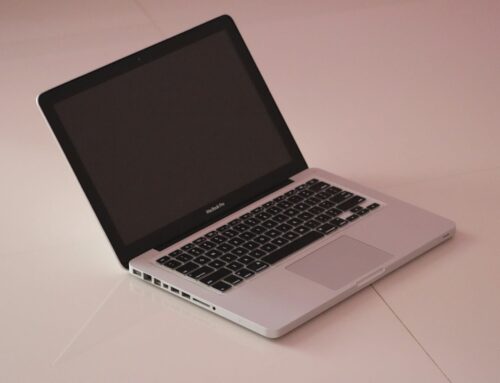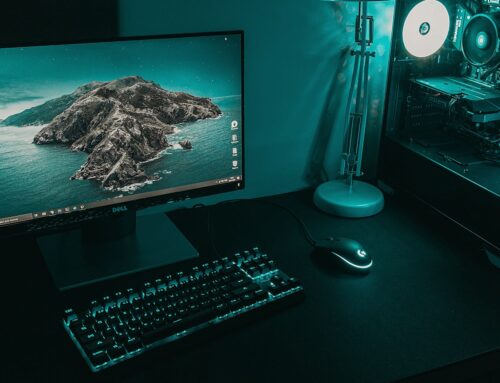Have you ever been in the middle of a task when your desktop computer starts making irritating noises? It’s a scenario that many of us face at some point. Whether it’s a constant hum, an occasional rattle, or intermittent beeping, a noisy computer can be incredibly distracting. More than just being bothersome, these sounds can signal underlying issues needing attention. Addressing these noises promptly can prevent bigger problems down the line, ensuring your computer stays in good working order.
In London’s tech-savvy community, ensuring your equipment runs smoothly is key to productivity and peace of mind. Noise in a desktop computer can stem from several places, each requiring a different approach to diagnose and fix. Let’s explore the common culprits and how you can begin identifying what’s causing your computer to be noisier than usual.
Common Causes of Noisy Desktop Computers
When it comes to desktop computers, a range of factors can contribute to excessive noise. Here are some of the most common causes:
– Dust and Dirt Buildup: Over time, dust accumulates inside your computer, especially on fans and other components. This dust can cause the fans to work harder, creating more noise as they attempt to keep the system cool.
– Cooling Fan Issues: Fans are the primary components responsible for keeping your computer’s temperature down. If they become worn out or begin to malfunction, they might spin unevenly or at higher speeds, causing a noticeable ruckus.
– Hard Drive Noises: Traditional hard drives have moving parts. If these make clicking or grinding noises, it might mean they’re struggling or potentially failing, which is a serious concern if left unchecked.
– Power Supply Problems: A faulty power supply can cause various sounds, from buzzing to humming. If it’s overtaxed or has internal issues, it may not distribute power efficiently, leading to increased noise levels.
Basic Diagnostics to Identify the Source of Noise
Tackling a noisy desktop involves some straightforward checks you can do at home. First, let’s start with a visual inspection. Carefully open up your computer’s case and take a look inside. Look for layers of dust and debris that might have gathered over time. The more gunk built up on fans and other parts, the harder they’ll work, causing all sorts of unwanted noise.
Next, move on to checking your fans. Give them a gentle spin with your fingers (when the computer is off, of course) to see if they rotate smoothly. If they seem wobbly or make odd sounds, it might be time for a change. For those feeling comfortable with technology, software tools can be quite useful. Various programs can monitor the performance of your computer’s hardware, letting you spot any anomalies in fan speed, temperature, and more.
Lastly, trust your ears. Listen closely to identify the type of noise. Whether it’s a continuous hum, rhythmic clicking, or even a buzzing sound, each indicates different issues. Noticing a familiar whirring noise during startup may point to hard drive problems, while a repetitive clicking could mean a more serious hardware issue.
Effective Solutions for Reducing Desktop Computer Noise
Once you’ve spotted the troublemakers, it’s time to take action. Here are effective methods to help quiet down your desktop:
– Cleaning the Interior: Give your computer a good clean. Use canned air to blow out dust and grime from fans, vents, and other components. This simple maintenance can drastically reduce noise levels.
– Replacing Faulty Fans: If your fans are the main culprits, consider replacing them with new ones. There are quieter models available that provide better cooling without the ruckus.
– Switching to SSDs: If your hard drive’s clatter becomes unbearable, think about shifting to a solid-state drive. SSDs don’t have moving parts, so they’re silent and typically faster.
– Improving Airflow: Ensure your desktop has proper airflow. Arrange cables neatly and keep vents clear. This will stop your machine from overheating, thereby reducing the need for fans to spin at full throttle.
When to Seek Professional Help for Noisy Desktops
There are instances where fixing a noisy desktop might be out of your depth. If noise persists even after basic troubleshooting, it may be time for an expert to step in. Professionals can delve deeper into hardware issues that might not be apparent.
– Noise Persists: If your efforts didn’t lead to a quieter machine, further investigation might be necessary. It’s better to get a skilled pair of hands to prevent risking further damage.
– Component Replacement: Some fixes need parts that only a technician should handle, like a faulty power supply unit.
– Avoiding Further Damage: Professional assessment is the safest way to address any unresolved problems, ensuring that your desktop continues to run efficiently without any loud interruptions.
Wrap-Up Tips for a Silent Computing Experience
Creating a quieter computing environment begins with knowing what to listen for and understanding how to maintain your machine. Through regular maintenance and quick responses to new noise, your desktop can remain reliable and less noisy. Remember, fine-tuning your setup may take time, but the reward is a serene workspace with a device that performs optimally. Keep these strategies in mind for a better, quieter experience as you continue to tame your tech.
For those in London, Ontario, experiencing ongoing noise issues with their desktop computers, don’t let these disruptions keep affecting your workflow. Turn to Forest City Computer Repairs for professional help. Whether it’s a tired cooling fan or a power supply problem, ensure your machine gets the expert attention it deserves. Explore our desktop computer repair service to see how we can assist in restoring quiet efficiency to your workspace.







